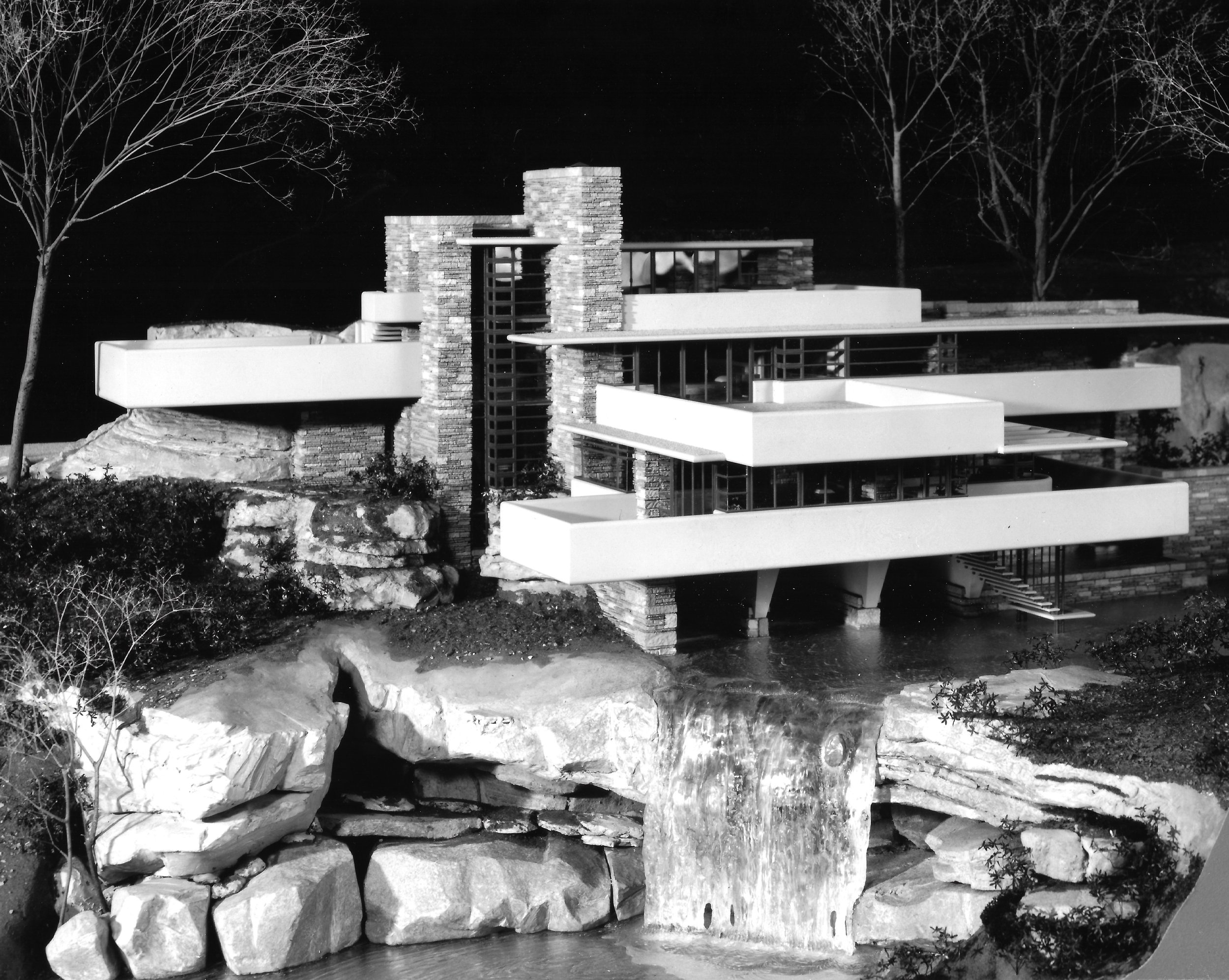
Fallingwater
Bear Run, Pennsylvania
Frank Lloyd Wright, Architect
1934-1937
Model: 1986
Scale: 3/8”=1’0
Photo courtesy of the Museum of Modern Art
Fallingwater is considered by many to be the most iconic and greatest masterpiece of modern architecture. True to Wright’s philosophy of organic architecture, it is designed in harmony with the environment, built partly over a waterfall on Bear Run, in the Mill Run section of Pennsylvania.
I was commissioned by the Museum of Modern Art in 1984 to construct this model for its permanent collection. Even though the son of Mr. Kaufman (the owner of the house at the time) supplied me with Frank Lloyd Wright’s ¼” scale drawings, I spent two days measuring the house, the topography and the waterfall.
I converted these drawings to the architectural scale of 3/8” which was the standard that I established for all the models I built for MoMA. The model took 2 years to complete.
https://www.moma.org/collection/works/980
My measurements showed that there were some changes made during construction. As far as I’m aware, I possess the only as-built drawings of this famous house.
A few years after its completion, I was contacted by Tom Monaghan, owner of the Domino's Pizza chain. A great admirer of Frank Lloyd Wright, he commissioned me to build his own model of Fallingwater for his collection and museum in Ann Arbor, Michigan. Within a few months I began construction on the second model of Fallingwater, this time with interior lighting to show off all the furniture and details. This model also took 2 years to complete.
In 2001, I wrote a book published by Rizzoli, titled “Falling Water The Model,” which details how the model was built, revealing all the techniques and secrets of its construction. The book was designed by his daughters design agency, Bonfilio Design.
